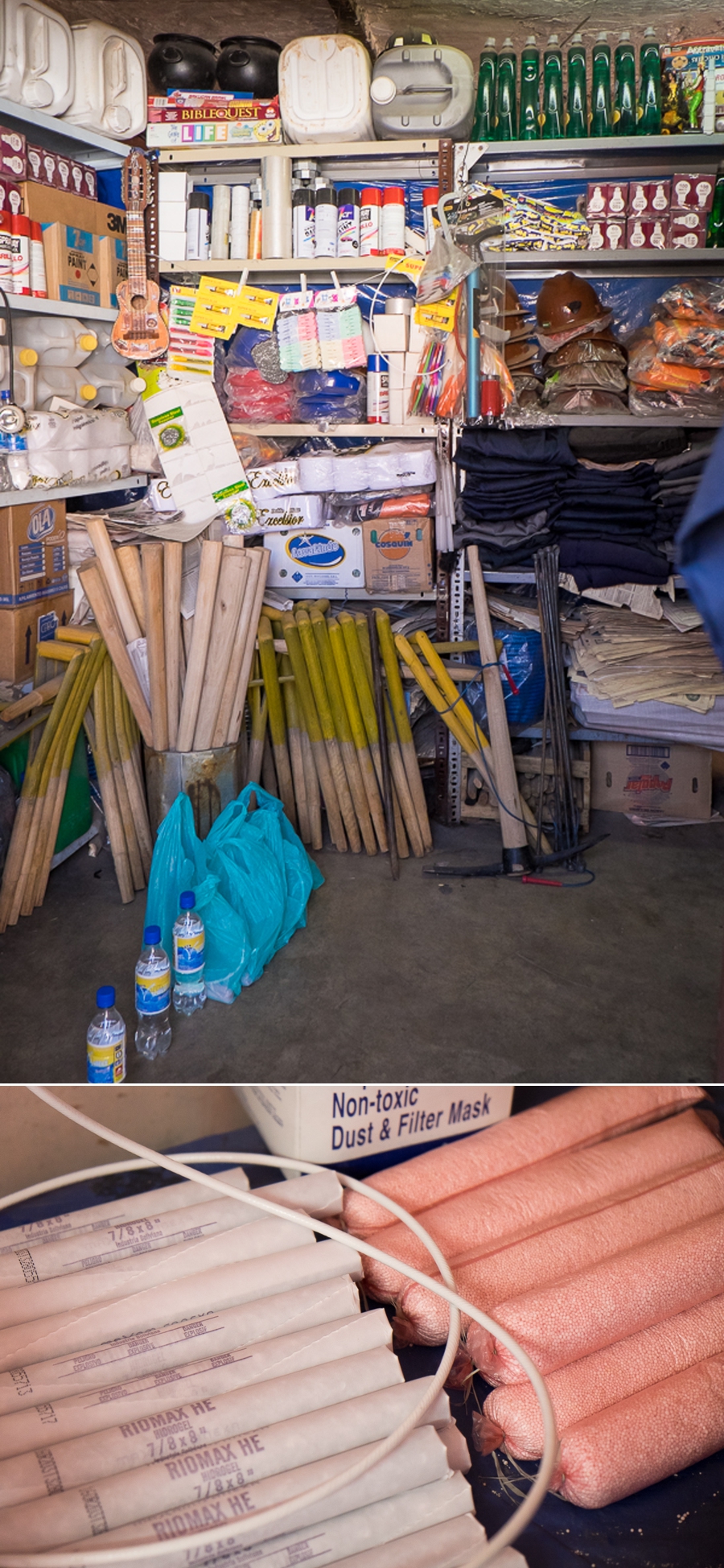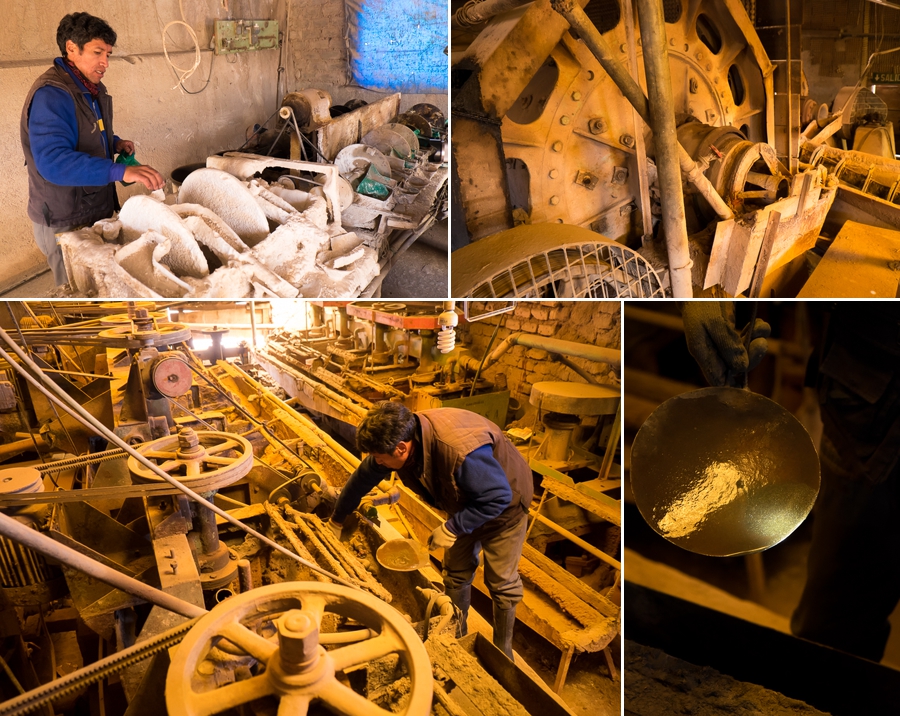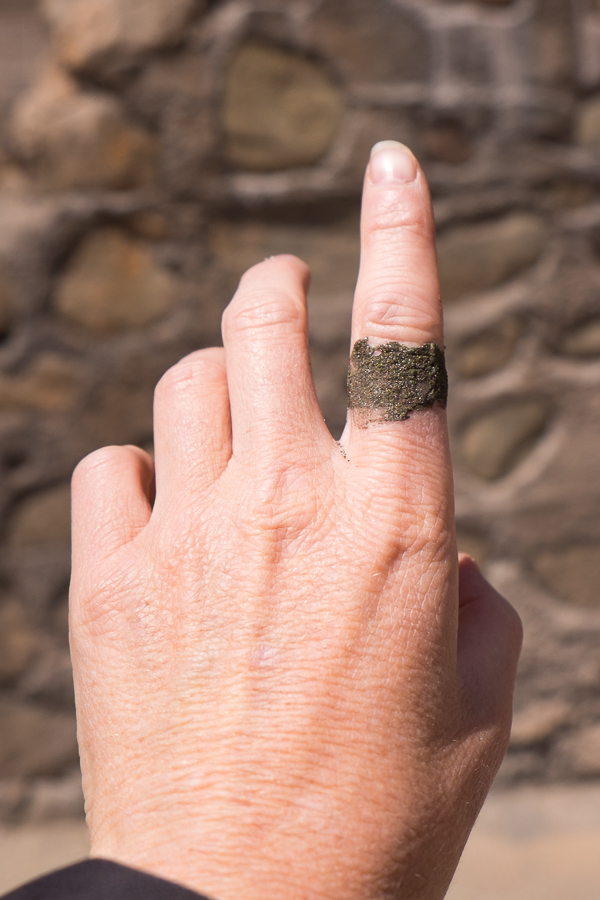The city of Potosí in Bolivia has 2 key claims to fame:
- at 4090m above sea level, is one of the highest cities in the world.
- it is the site of one of the richest silver mines in the world – Cerro Rico
Well, it was until they dug all the silver out of the mountain, actually reducing the height of Cerro Rico by about 400m.

Back in the day (16-18th centuries), the silver was used to essentially bankroll the Spanish empire, making Potosí one of the largest and richest cities in the world.
How times have changed!
Potosí is in dramatic decline and there is a not-so-faint air of desperation about the place these days. Especially since it is believed that Cerro Rico only has a few years of mining left in it, and is in danger of total collapse given how “Swiss-cheesed” its interior has become thanks to 500 years of the activity.
Cerro Rico and the mines are, of course, the main reason to visit Potosí, so after donning gumboots, helmet and headtorch, and an overcoat and overpants that were 6 sizes too big for me, we headed up to the “Miner’s Market” to stock up on some “gifts” for the workers who allow us to tour their operating mine. The suggested gifts were soft drink, water, coca leaves (they chew these rather than eat while they are working in the mines to stave off hunger and to avoid eating the toxic dust), and explosives. How often do you get to buy explosives 😉

From there we went to one of the numerous processing plants in the city – all but 4 of which are currently closed – to learn about how the silver is extracted from the ore.

And we each were given a “silver ring” as a souvenir, though I have to admit that I “lost” mine within about an hour 🙁

We then headed up Cerro Rico to the mine we would be visiting. Given the mines are all still active, we had to keep out of the way – not only to avoid annoying the miners, but for our own safety. The ore carts are incredibly heavy when they are fully laden and almost impossible to stop.
[evp_embed_video url= “http://lisagermany.com/wp-content/uploads/2016/11/mine-exit.mp4″]
Each ore cart has 3 guys working it. The first guy running out the front – he’s doing that to make sure there are no rocks, etc on the tracks that could potentially derail the cart. The 2 guys on the back are there to try to control the cart a little.
All three of them work to unload the cart (by flipping the barrel sideways) and then drag it back into the mine once it is empty.
[evp_embed_video url=”http://lisagermany.com/wp-content/uploads/2016/11/mine-entrance.mp4″]
There is only one rail track in the mine, so these guys also work together to overturn the empty cart to get it off the tracks if there is a laden cart coming out of the mine. Laden carts have right of way. They then need to hoist the cart back onto its wheels and onto the track to keep going.
This is what it looks like from within the mine – the front runner has already gone through. Note the wad of coca leaves in their mouths.
[evp_embed_video url=”http://lisagermany.com/wp-content/uploads/2016/11/inmine.mp4”]
In the main exit tunnel, there would have to have been a cart a minute on average coming out – usually more. It was surprisingly busy!
We visited a few different areas of the mine including a place where the crew were preparing for a new blast.

We watched while one of the miners sorted the dynamite, and then hid around the corner with crew, waiting for the blast to go off. I felt the compressive blast wave before I heard the dull thud of the explosion – it was quite an experience – and more than a little scary given the thought of the mountain potentially collapsing on top of you!
While the crew waited for the majority of the dust to settle (about 2 hours), we headed up a different tunnel to visit El Tío – the spirit of the underworld of Cerro Rico. He is the protector of the miners who offer him cigarettes, alcohol and coca leaves to keep them safe and help them find the next vein of riches. Clearly he finds his job quite difficult given that Cerro Rico is also known as “the mountain that eats men” due to the number of deaths that have occurred there.

In fact, the working conditions of the miners (~15,000 men each day work the mines inside Cerro Rico) are very, very poor with minimal protective equipment. The average life expectancy of the men is only 40 years due to Silicosis from breathing in the dust, and I have to admit, you don’t get very far into the mine before you notice that it is much harder to breathe and the air has a faintly “sweet” smell to it – apparently due to arsenic in the dust.
In another part of the mine we found a miner (the guy with the bandanna) taking a break from drilling holes for dynamite sticks. We ended up chatting with him for quite a while about the pension he was expecting at the end of his lifetime in the mines. It will be ridiculously small, and he was one of the well-off miners who are actually part of the mining cooperative! The majority of workers get essentially nothing for having ruined their health in the mines.

All in all it was a fascinating look into working silver mine, but also a very sobering experience to understand the conditions in which these guys work and the limited prospects for their future.
Recommendation: This is an interesting but confronting and slightly heartbreaking excursion. If you are claustrophobic, you may find that you will not be able to cope with entering the mine, which is dark and the tunnels generally less than 2m high. Even I walked through much of it slightly bent over and I’m only 165cm tall. We had 2 people from our group of 8 decide not to enter. I went with Koala Tours who have tours in the morning and the afternoon and were a good outfit.
Cost: ~US$15 (with Koala Tours 15% of profit goes to mining community) + you are expected to buy some gifts for the miners at the Miner’s Market.
Time: ~4 hours